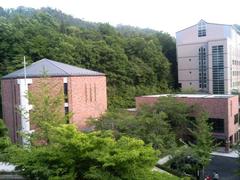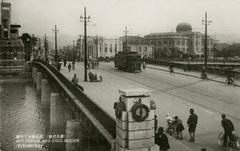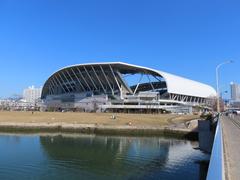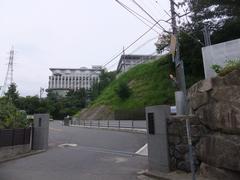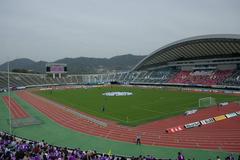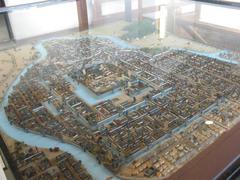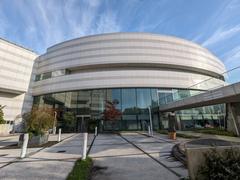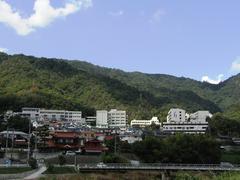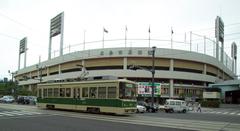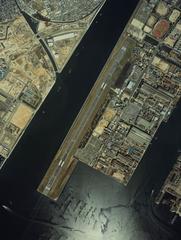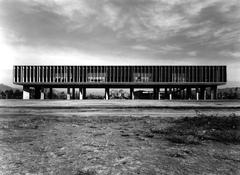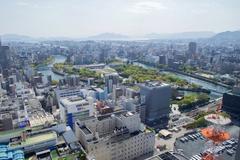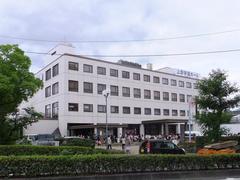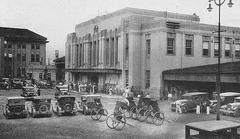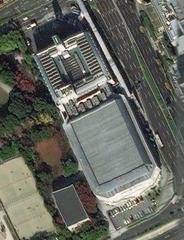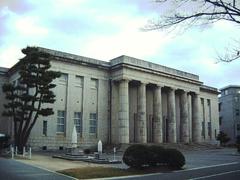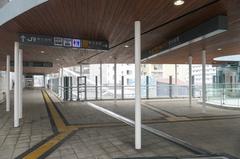
Hiroshima Jogakuin University Visiting Guide: Hours, Tickets, and Nearby Attractions
Date: 14/06/2025
Introduction
This guide provides comprehensive information for prospective visitors, students, and history enthusiasts, outlining the university’s history, cultural significance, visiting details, and nearby attractions. By blending practical advice with historical and cultural context, the guide encourages readers to experience HJU as both a historic site and an active center of education and intercultural exchange.
Table of Contents
- Introduction
- Founding and Historical Development
- World War II and Postwar Reconstruction
- Academic Programs and University Mission
- Visitor Information
- Campus Highlights
- Annual Events and Cultural Activities
- Nearby Hiroshima Attractions
- Visitor Logistics and Travel Tips
- Frequently Asked Questions (FAQ)
- Conclusion
- References
Founding and Historical Development
Hiroshima Jogakuin University was founded in 1886 as Hiroshima Jogakuin, a girls’ school established by Nannie Gaines and the Women’s Foreign Missionary Society of the Methodist Episcopal Church. This initiative was part of a broader Meiji-era movement to modernize Japan’s education system and expand opportunities for women, who had previously faced significant barriers to formal academic study. The early curriculum emphasized Christian ethics, English language instruction, and the liberal arts, reflecting both missionary ideals and progressive educational philosophies.
In 1949, following the devastation of World War II, the institution was chartered as Hiroshima Jogakuin University. This milestone marked its transition into one of Japan’s first women-only private universities, underscoring its dedication to advancing women’s higher education (Study Abroad Aide).
World War II and Postwar Reconstruction
Hiroshima’s tragic experience as the first city to be struck by an atomic bomb on August 6, 1945, is inseparable from HJU’s history. The university campus sustained significant damage during the bombing, and the university community faced immense loss and hardship. Despite these challenges, HJU played a vital role in the city’s reconstruction, embodying resilience and a renewed commitment to peace.
Postwar, the university’s Christian ethos and focus on social responsibility became even more pronounced. HJU fostered reconciliation and global citizenship, integrating peace studies and human rights education into its academic programs and campus culture. This dedication to peace continues to define the university’s identity (Cultural and Educational Significance of Hiroshima Jogakuin University: A Beacon of Peace, Women’s Empowerment, and Global Citizenship).
Academic Programs and University Mission
HJU consistently upholds a liberal arts approach, emphasizing the humanities, social sciences, and education. Over time, the university has expanded its academic offerings to include human life studies, language and culture, childhood education, nutrition and health, and global studies. Many programs are available in both Japanese and English, supporting international engagement (Hiroshima Jogakuin University Visit Guide: Hours, Tickets, and Campus Highlights).
The university’s enduring mission is to nurture “women who serve society.” Rooted in Christian values, HJU aspires to cultivate leaders dedicated to peace, social justice, and intercultural understanding, inspired by Hiroshima’s unique legacy as a city of both tragedy and hope.
Visitor Information
Visiting Hours
- Campus Access: Open to visitors on weekdays from 9:00 AM to 5:00 PM.
- Special Facilities: The History Museum and library typically operate from 9:00 AM to 4:30 PM. Some areas may have restricted access.
Admission and Tickets
- General Entry: Free of charge for campus visits and most facilities.
- Events or Tours: Registration or tickets may be required for certain events, such as cultural festivals or peace seminars. Check the university website for details.
Guided Tours
- Availability: Occasional guided tours are available, focusing on campus history, architecture, and peace initiatives. Groups and international visitors are encouraged to arrange tours in advance through the International Office.
Accessibility
- The campus is wheelchair accessible, with ramps and elevators in major buildings. Visitors with disabilities can request additional assistance via the university’s visitor services.
Campus Highlights
- History Museum: Showcasing HJU’s 139-year history, the museum features artifacts that survived the atomic bombing, historic photographs, and documents detailing women’s education and Hiroshima’s postwar recovery (HJU campus map).
- Lambuth Hall (Sunamoto Memorial Auditorium): This iconic hall hosts ceremonies and includes the university’s motto, “CUM DEO LABORAMUS.” The second floor houses the Student Support Center, International Programs Center, and Career Support Center.
- Library: With approximately 280,000 books and 6,000 serial publications, the library offers visitors quiet study areas and scenic views of the campus’s greenery.
- Athletic Field: A spacious area with panoramic views of Hiroshima, featuring tennis courts, a kyudo (Japanese archery) range, and multipurpose sports fields.
- Gaines Kindergarten: Established in 1994, this on-campus kindergarten features award-winning natural landscaping and reflects HJU’s commitment to holistic education (note: access is limited to protect privacy).
Annual Events and Cultural Activities
- Peace Seminar: Held every August, this internationally attended seminar focuses on peace education and nuclear disarmament, reflecting Hiroshima’s and HJU’s dedication to these themes.
- University Festival: Each autumn, the festival features cultural performances, food stalls, exhibitions, and club activities, open to the public (HJU campus calendar).
- Other Activities: Orientation camps, fieldwork, and regular cultural events encourage leadership and community engagement.
Nearby Hiroshima Attractions
Enhance your visit by exploring these notable sites near HJU:
- Hiroshima Peace Memorial Park: A 15-minute walk from campus, this park commemorates the atomic bombing victims and promotes world peace.
- Atomic Bomb Dome: UNESCO World Heritage Site and iconic symbol of Hiroshima’s resilience.
- Shukkeien Garden: A traditional Japanese landscape garden, about 2 km from HJU.
- Hiroshima Castle: Reconstructed postwar, it features exhibitions on local history and samurai culture.
Visitor Logistics and Travel Tips
- Address: 4-13-1 Ushitahigashi, Higashi-ku, Hiroshima-shi.
- Transport: Easily accessible from Hiroshima Station via bus or tram. Public transport is recommended due to limited parking (International Student Portal).
- Language: English signage is available. The International Center offers support for non-Japanese speakers.
- Dress Code: Modest attire is recommended, especially for visiting religious or ceremonial facilities.
- Photography: Permitted in outdoor and public areas; please respect posted restrictions.
- Maps: Multilingual campus maps are provided at the main entrance and online (HJU campus map).
Frequently Asked Questions (FAQ)
Q: Is the university open to male visitors?
A: Yes, while enrollment is women-only, the campus welcomes all visitors.
Q: Are there entry fees for visiting?
A: Most areas are free; some events may require advance registration or tickets.
Q: How can I arrange a guided tour?
A: Contact the International Office in advance, especially for group visits.
Q: Is the campus accessible to people with disabilities?
A: Yes, HJU is equipped with ramps and elevators; contact the International Center for special arrangements.
Q: Can I take photographs on campus?
A: Yes, in permitted areas. Please observe signage regarding restricted spaces.
Conclusion
Hiroshima Jogakuin University is a vibrant institution deeply rooted in Hiroshima’s history and dedicated to peace, women’s empowerment, and global engagement. Its historic campus, annual peace events, and proximity to world-renowned sites make it an essential stop for anyone interested in Japan’s educational and cultural heritage.
Visitors are encouraged to explore the History Museum, attend cultural festivals or peace seminars, and take advantage of guided tours to maximize their experience. Exploring HJU alongside Hiroshima’s other historical landmarks provides a profound insight into the city’s enduring message of peace and resilience.
For further information, arrange your visit through the university’s official website, and consider downloading the Audiala app for curated audio tours and updates on Hiroshima’s cultural sites.
References
- Cultural and Educational Significance of Hiroshima Jogakuin University: A Beacon of Peace, Women’s Empowerment, and Global Citizenship, 2025 (https://www.hjs.ed.jp/en)
- Hiroshima Jogakuin University Visit Guide: Hours, Tickets, and Campus Highlights, 2025 (https://www.hju.ac.jp/eng/)
- faculty.utm.edu
- alluniversity.info
- hu-global-ed.org
- International Student Portal
- Times Higher Education
- HJU campus map
- HJU campus calendar
